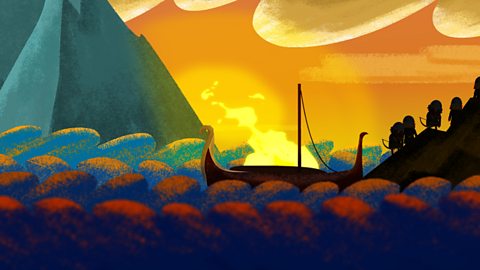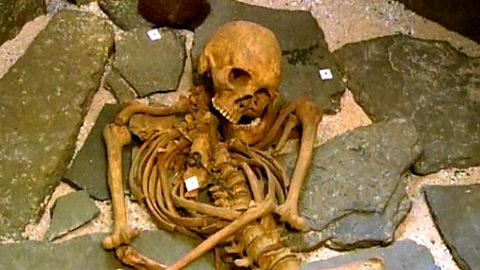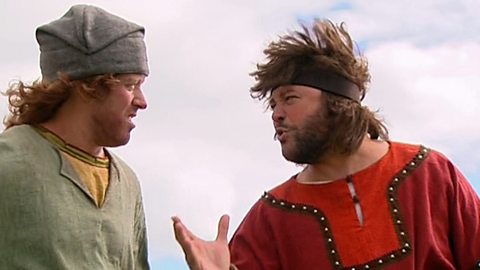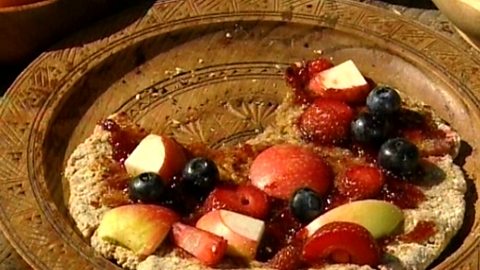So what did the Vikings wear?
The first thing to remember is that quite a lot of things would have been homemade and also they would have used materials that were around at the time.Like wool, which was itchy, but it kept them warm, and that was important.
Also, they had linen. And leather.
And sometimes, they even had silk, which was brought from abroad when the Vikings traded.
This is what we think the Vikings might have worn.
Ingrid is wearing an underdress and on top of that, a silk dress.
This is decorated with some fine Viking jewellery.
This Viking is quite rich. She is wearing a fur to keep her warm.
Not everyone would have had the beautifully-crafted jewellery and their clothes would have been a lot plainer.
An outfit like this might have been worn by quite a rich Viking who had travelled, but whose clothes were also very practical.
Today, I'm wearing leggings for warmth under my fetching tunic.
A heavy woollen cloak would be essential for the cold winters.
The cloak is pinned together with a brooch, but making sure that the sword is always easy to reach, should you need to get to it in a hurry.
Some Vikings would wear a lot of expensive jewellery to show how rich and powerful they were, so not so different from today. People nowadays like to wear big diamond rings or expensive-looking jewellery.
Everyone from, like the Queen, to hip-hop rappers likes to wear their bling, innit?!
A description of the sort of clothes the Vikings wore.
They were handmade out of materials available at the time such as, wool, linen, leather and silk.
Clothes had to be practical to keep people warm and dry, and to enable them to do their work.
Wealthy Vikings wore fine clothes and expensive jewellery to show how rich and powerful they were.
This clip is from the ΒιΆΉΤΌΕΔ series, 'See You See Me'.
Teacher Notes
- Pupils could research Viking fashion and design their own Viking clothes.
- They could consider the role of the Viking's clothing, which clothes would be appropriate for them and a Viking's importance within society by identifying what they are wearing and what this may tell us about them.
- Consider where the materials used were sourced from and whether we still use them today and use to further pupils' own research into the Vikings.
Curriculum Notes
This short film is relevant for teaching History at KS2 in England and Wales, KS2 in Northern Ireland and second level in Scotland.

More video clips on The life of the Vikings:
Viking beliefs. video
Discover which gods the Vikings worshipped and why. Find out about their powers, what the Vikings believed and why these beliefs were so important to how they lived, and died, in Viking society.

A Viking grave. video
An archaeologist explains to children visiting a museum why the discovery of a Viking grave is important.

The importance of Lindisfarne for the Vikings. video
Lindisfarne, also known as Holy Island, was one of the first landing sites of the Vikings. However, the Vikings committed terrible violence against the Monks at Lindisfarne.

Viking food. video
Presenter James MacKenzie is shown the types of food that the Vikings ate, how it was prepared and cooked.
